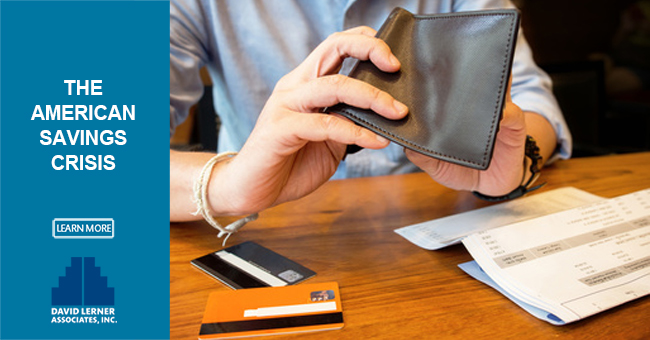
The American Savings Crisis
The situation is dire when one looks at the statistics. Since the 1970s, our personal savings rate has fallen from 12% to just 3% today. Almost half of all households don't have enough money socked away to meet a $400 emergency. At least one-third of Americans live paycheck to paycheck.
Take a look at your savings account. If you were hit with an unexpected expense of between $500 and $1000, would you be able to pay it?
If not, you’re not alone. According to a study, nearly 60% of Americans don’t have enough savings to cover such an unplanned expense. Surprisingly enough, Millennials were the most prepared. 47% of those aged 18-29 said they could dip into savings to cover an unplanned expense, a substantial increase from 33% in 2014.
If you’re already behind, living paycheck to paycheck, then putting an emergency fund together may seem unrealistic. But it is achievable. All that needs to happen is a change of habit.
The first step to building your emergency fund is to set a reachable savings goal. Start with $500. That’s something that can be done in a few months or even less if you are frugal.Put a time limit on it. “I want to save $500 by June 1st.” Ok, so now you can break that down into how much needs to be set aside monthly or even weekly.
The trick is to not have to earn extra money, but rather find the savings in the money you’re already spending. For example, take a look at your credit card payments. Is there a way to reduce your rates? Turn over your credit card, and call the number on the back. A simple request to get a rate reduction might result in a pleasantly surprising outcome.
Shopping around for better insurance policies can save you money. So can installing a programmable thermostat, planning your grocery shopping instead of just wandering around the aisles picking up random, unnecessary items.
Try reducing your number of dinners out per month. You’d be surprised at how much you spend on restaurants. Saving money on gas is easy if you have a colleague who lives close by and is willing to carpool, or you could use public transportation.
Ask yourself, “How often do I watch Netflix? Cable?” Find those monthly bills that you’re paying and that you’re not using. Is there a better cell phone plan you could be on?
Before you know it, $50 will be easily available to you and ready to be stored away in your emergency fund account.
In a few months, you’ll hit your first goal of say, $500. Now set another goal, maybe double the amount. And keep going until you can reach a goal of having an entire month’s worth of expenses sitting in your account. Then two months, three months and so on.

